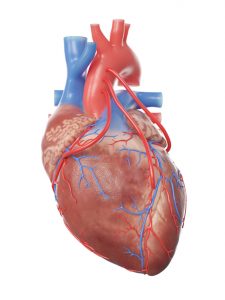Coronary Artery Bypass Grafting

Background
Coronary artery bypass grafting (CABG) is a surgical procedure for ischaemic heart disease – a disease that is caused by the gradual build-up of fat and calcium within the walls of the arteries of the heart causing them to narrow. This build-up reduces the blood flow to the heart’s muscle which can cause chest pain (angina) and if the narrowing becomes very severe or completely blocked it can cause a heart attack (myocardial infarction).
CABG involves bypassing these narrowings or blockages using a graft. The graft goes around the blockage in the artery to create a new pathway and restore the oxygen-rich blood flow to the heart.
CABG surgery is performed to relieve symptoms (including angina and shortness of breath) and to reduce the risk of a heart attack or other heart problems.

